Changing Color of Objects, Select Tools, and New Office
February 18, 2024
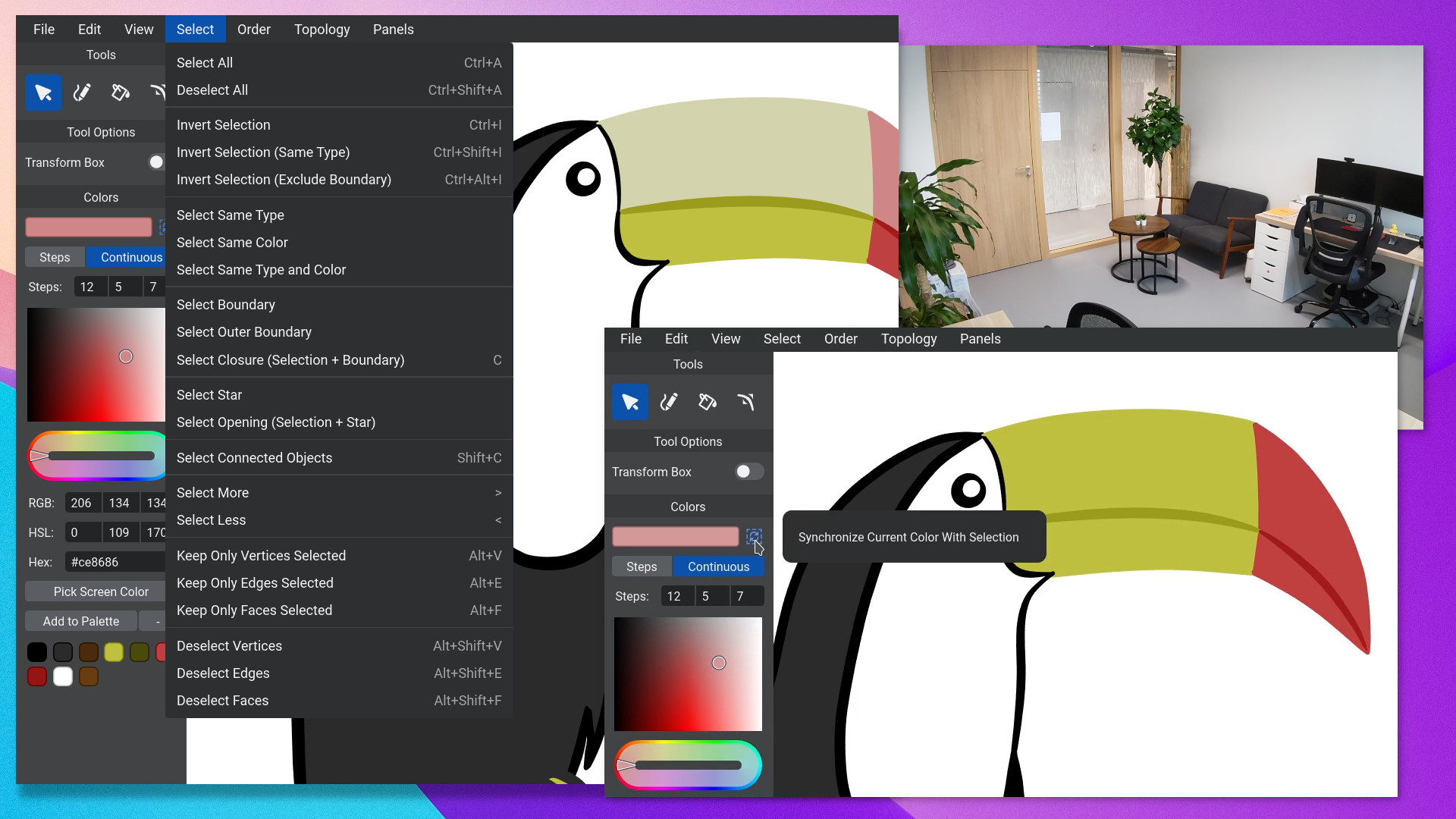
Hello everyone!
In an effort to post more regular updates on this project, here are the new features that have been implemented in the past few weeks:
- You can now change the colors of selected objects via the Colors panel.
- A whole new Select menu has appeared, with a ton of selection tools.
I’ll provide more details below, but first of all, I also moved to a new office! The reason is that the startup incubator “BIC de Montpellier” that is hosting/helping the project moved itself to a new building, so I followed along. For the curious among you, here is a quick look at the inside of the office, the building, and the park nearby.
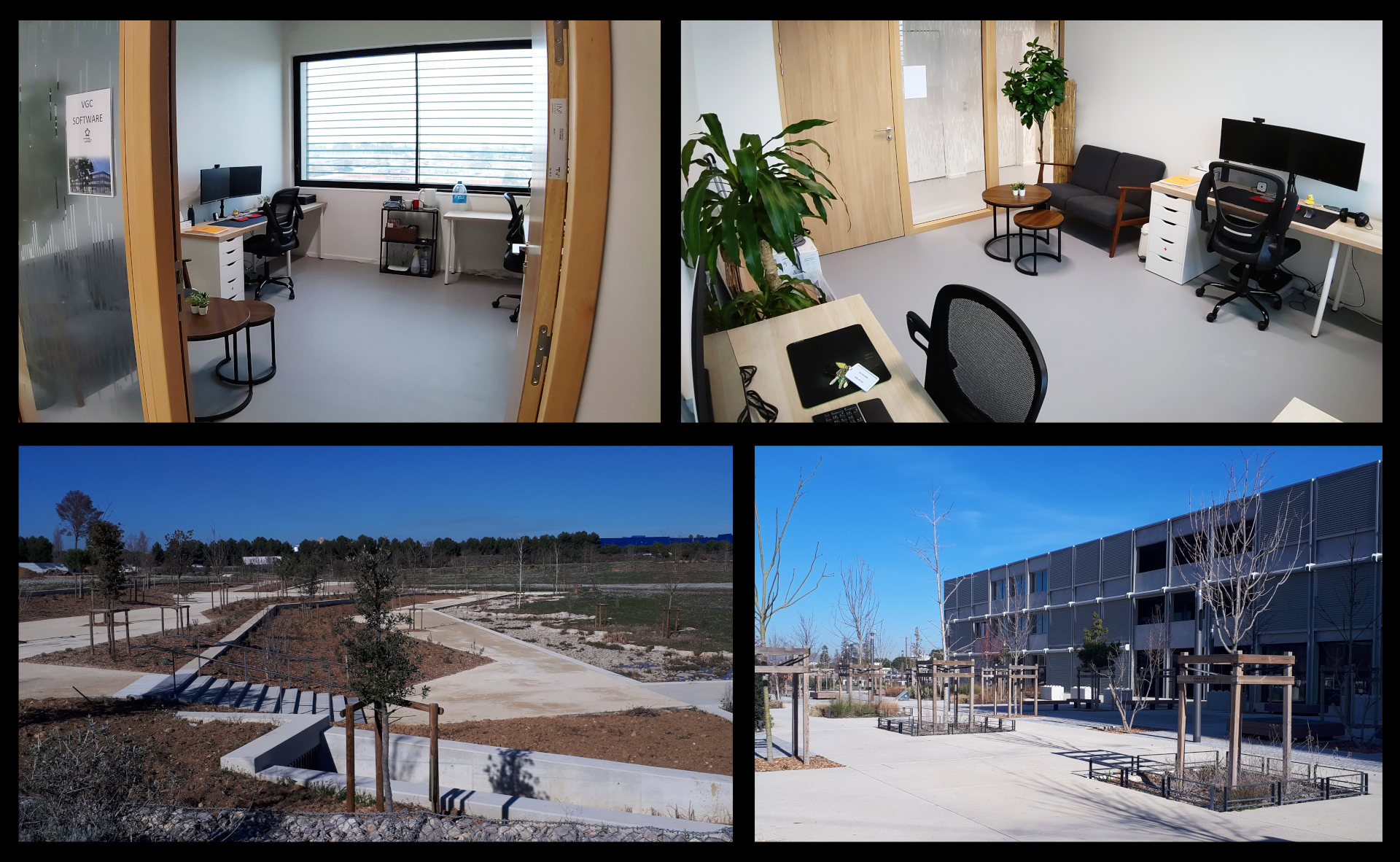
Changing Color of Objects
As mentioned in the intro, you can now finally change the color of existing objects! This is done by using a new option in the Color panel called "Synchronize Current Color With Selection”.
If enabled (the default), then modifying the current color changes the color of selected objects, and selecting objects changes the current color.
If disabled, then the current color is only used for new edges or faces. Selecting objects doesn’t affect the current color, and changing the current color doesn’t affect selected objects.
In the future, you will also be able to change the color of objects via an “Object Properties” panel, but for now at least there is one way to do it. Combined with the new feature “Select > Same Color” (see below), this allows you to easily change in bulk the colors of your artwork.
Select Menu
A whole new menu was implemented, with plenty of actions to change the selection!
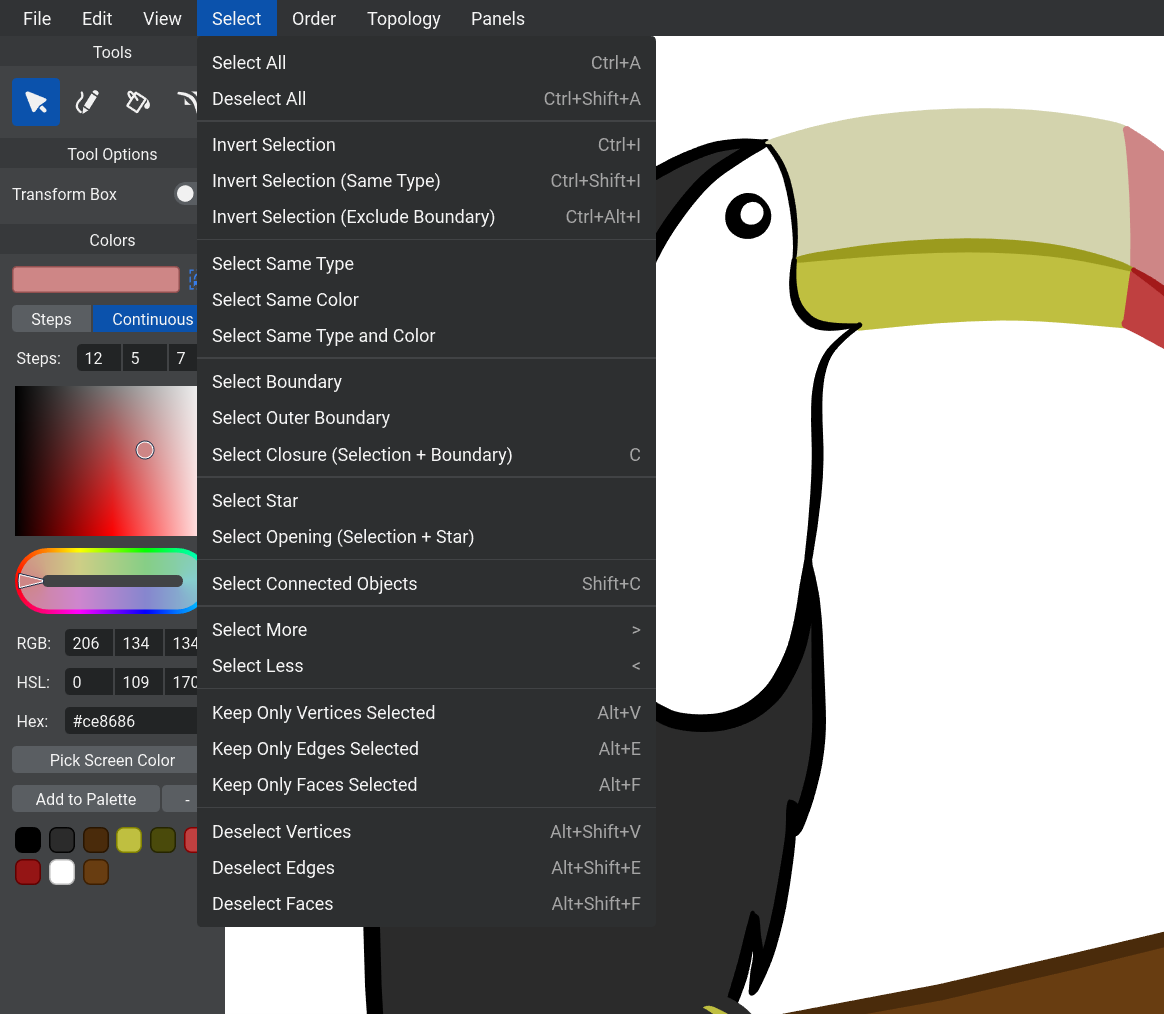
Select All / Deselect All: I guess there is no need to explain this one. Note that the Escape key can also be used to deselect all (or clicking on an empty space on the canvas).
Invert Selection: This selects everything that is not selected, and deselects what is selected. Note that because faces, edges, and vertices are distinct objects, then if you select a face and do “invert selection”, then the edges and vertices in the boundary of the face become selected. If you don’t want this, then you can use the alternative “Invert Selection (Exclude Boundary)”. Or if you just want other faces to be selected, you can use “Invert Selection (Same Type)”.
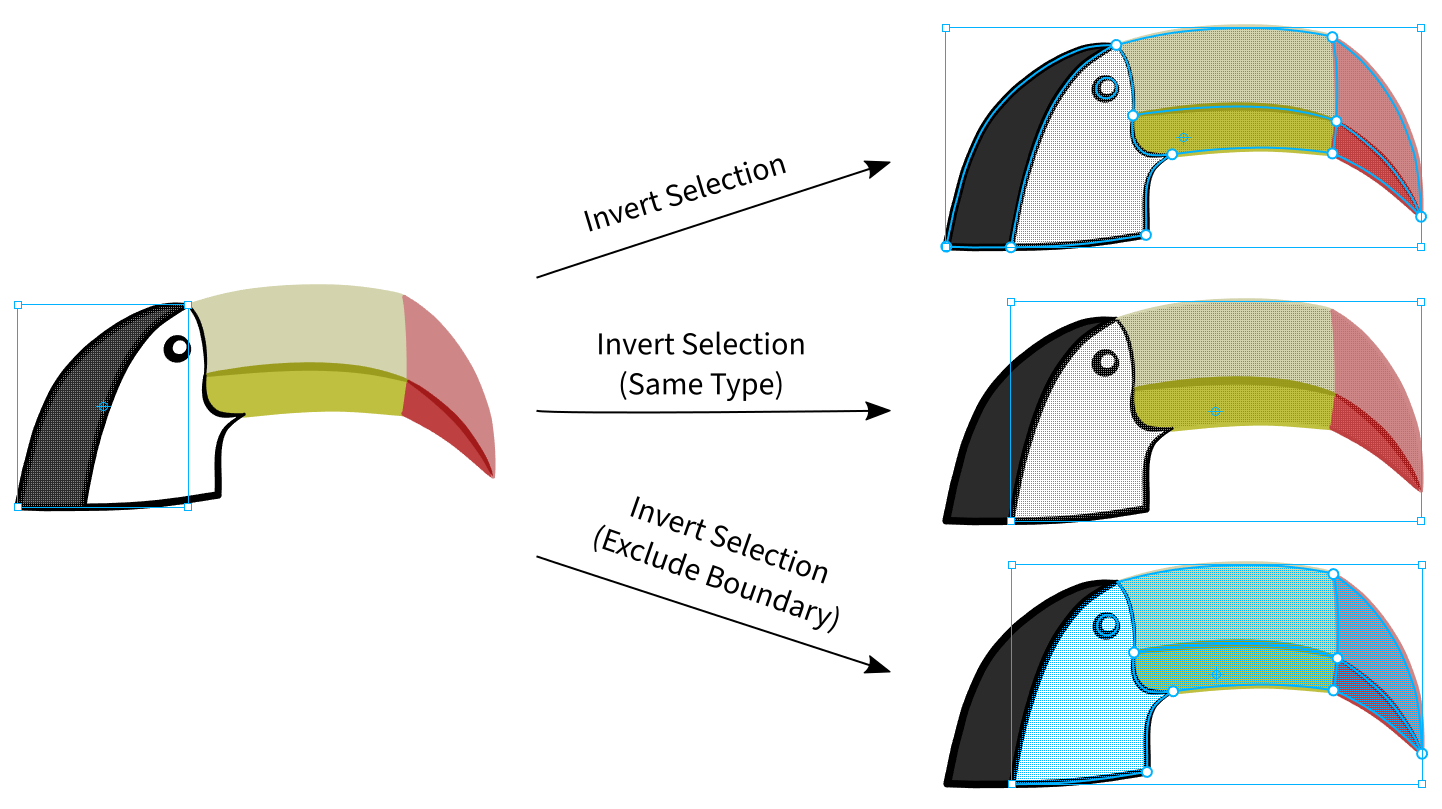
Select Same Color and/or Type: This feature was requested, so here it is! You can now easily select all objects that have the same color (and/or type) as the currently selected object. For example, if you want to select all red edges, then select one red edge, and do “Select Same Color and Type”. If you want to select all red edges and faces, do “Select Same Color”.
If you want to select all vertices (or all edges/faces), you can select one vertex (or one edge/face), then do “Select Same Type”. Note that for this specific use case, you can also do “Select All” followed by “Keep Only Vertices Selected”. So it is a bit redundant for now, but “Select Same Type” might become more useful in the future when there will be other types of objects (basic shapes, texts, groups, etc.)
Select Boundary, Outer Boundary, and Closure: The boundary of an edge is defined as its two end vertices, and the boundary of a face is defined as the vertices and edges in its contour. Using “Select Boundary”, you can easily select all of those. Note that if you select two faces that share a common edge, then “Select Boundary” will also select the shared edge. If you only want to select the edges on the outside of the selected faces, not including shared edges, you can use “Select Outer Boundary”. Finally, you can use “Select Closure” to add the boundary to the current selection. This is quite useful, for example before using “Order > Send Backward”, so that both the faces and their contour are moved backward.
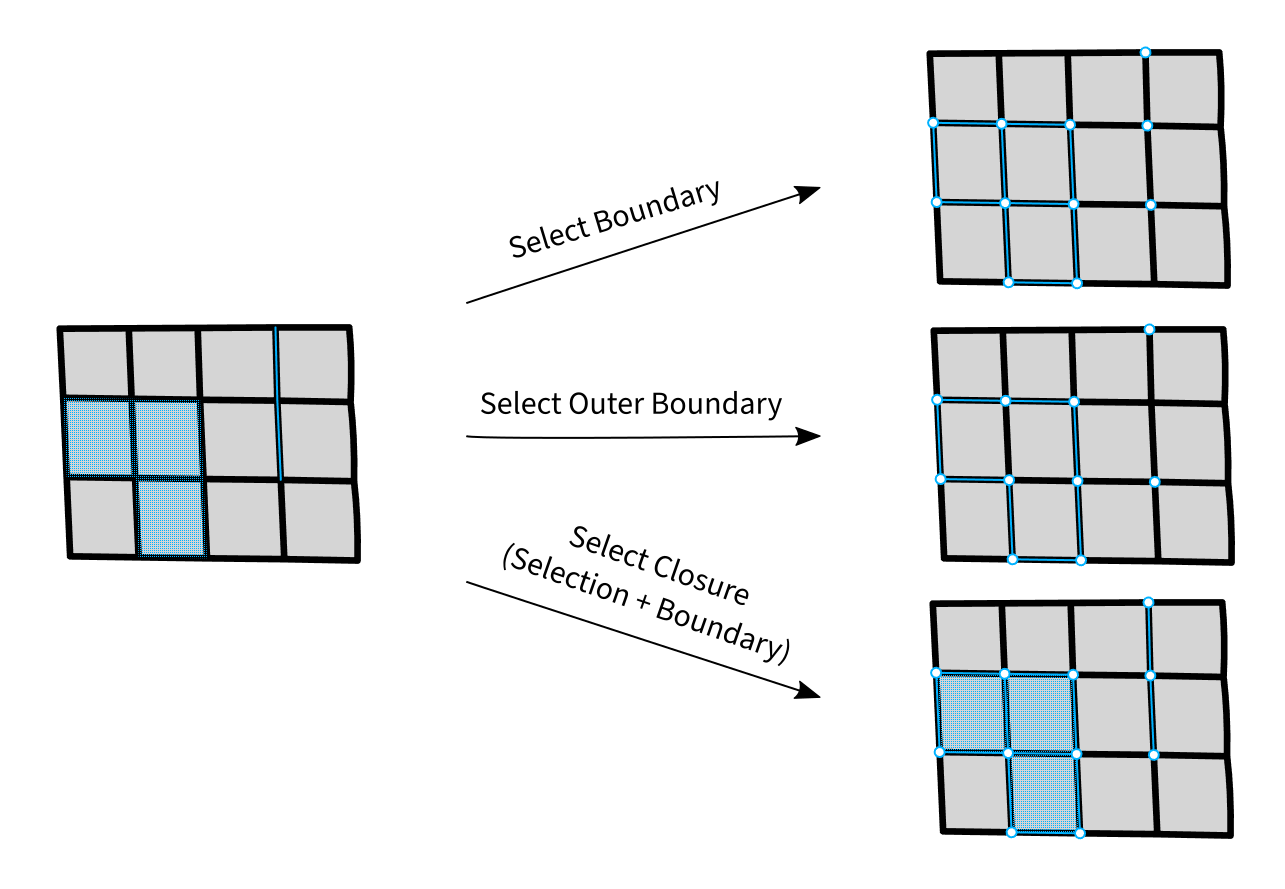
Select Star and Opening: These are the opposite of boundary and closure: the “star” of a given object is defined as the set of all other objects that have it in their boundary. The opening is defined as the object itself together with its star.
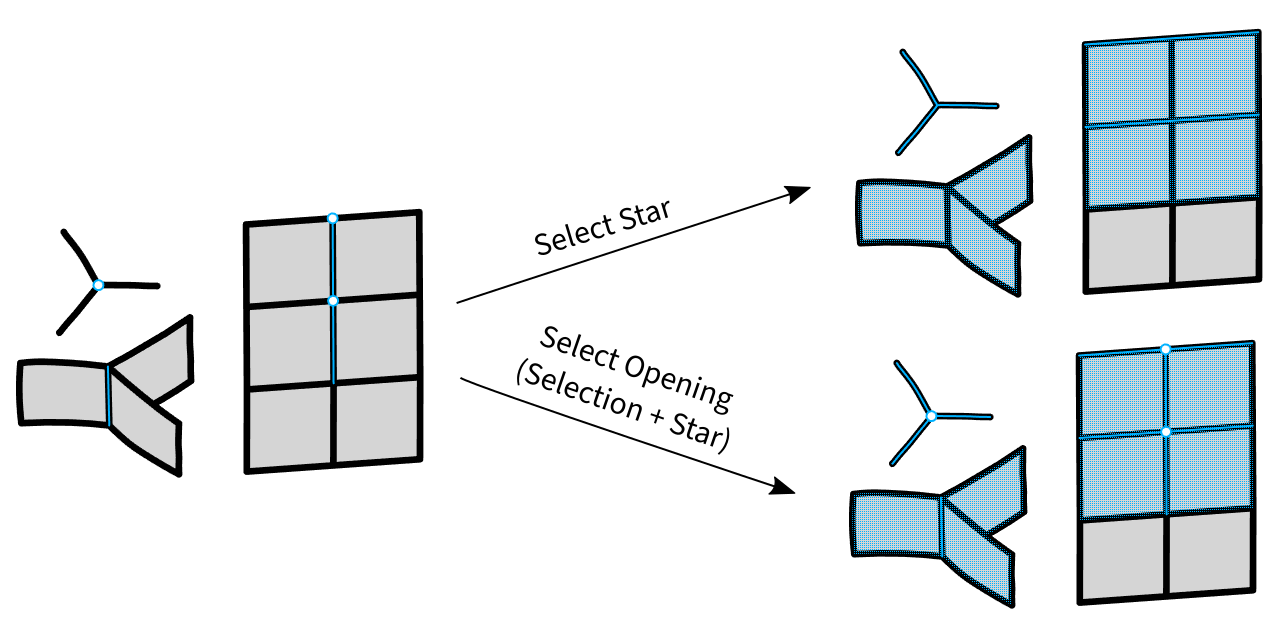
Select Connected Objects: This selects all the objects that are connected to the current selection. It is very useful as it allows you to interact with connected objects in a similar way as if they were groups (which are not yet implemented).
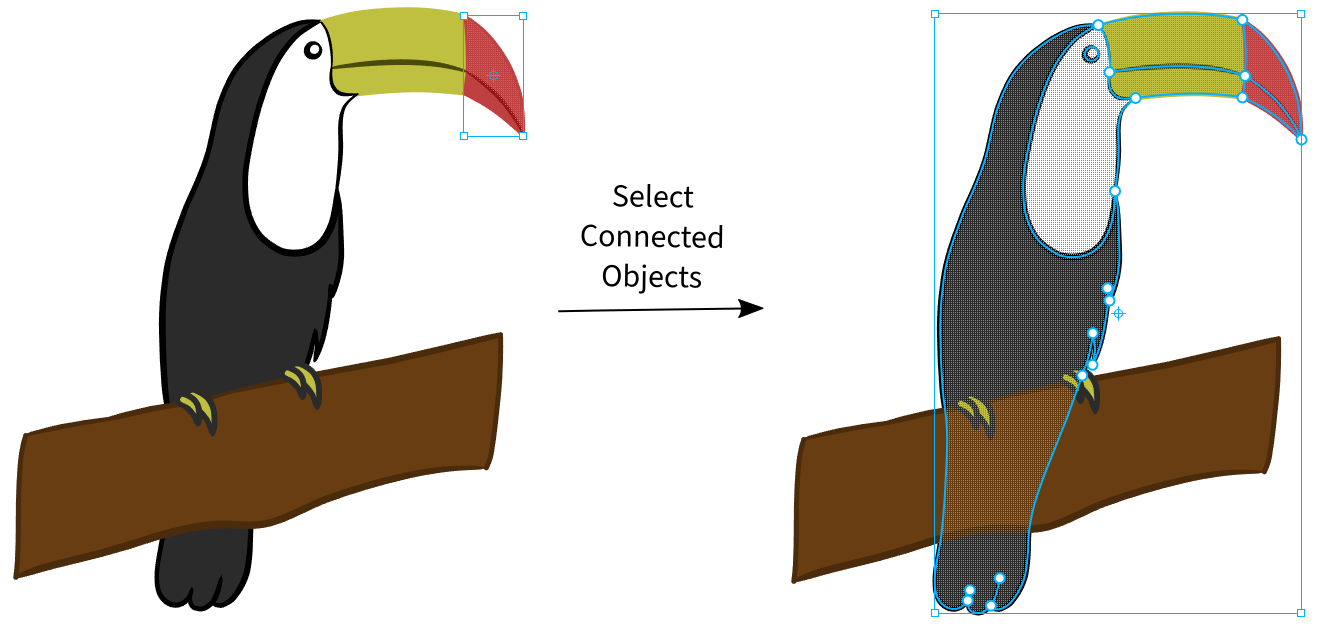
Select More / Less: This allows you to extend or contract the selection. It is often used in 3D modeling tools, and while I’m not sure how useful this can be for 2D, it is something that is possible with the data structure used by VGC Illustration and it only took a few hours to implement, so here it is! I’m sure there are some use cases.
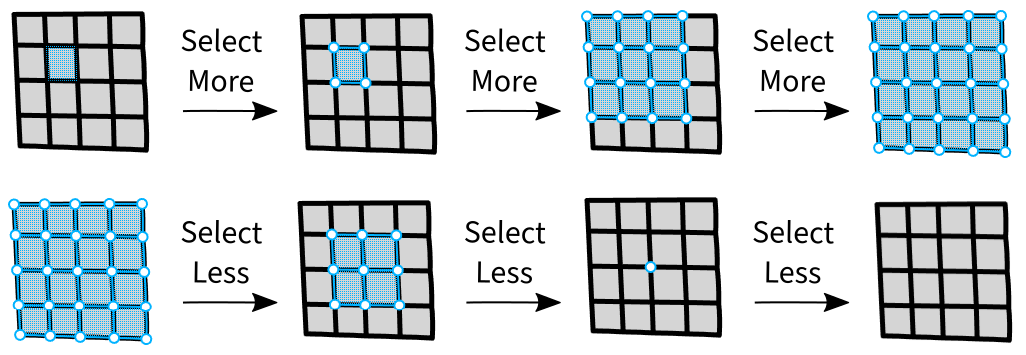
Only Keep Vertices (or Edges, or Faces) Selected: Let’s say you have a nice selection but only want to select the edges of this selection, for example to change their color? Then “Only Keep Edges Selected” is the tool for you.
Deselect Vertices (or Edges, or Faces): This is pretty much self-explanatory. Do you want to deselect all the vertices? Well, now you have a tool for that.
What’s Next?
I’m taking a one-week vacation, then will be back to implement the following:
- Sketch Tool: improve smoothing of sketched strokes and provide user controls
- Auto-Cut: option to automatically create vertices at intersections between edges and cut faces while sketching
I hope you find the new features useful, and do not hesitate to share your feedback or artwork on Discord.
Until next time,
Boris
Stay tuned
Found this news interesting? We can send the next ones straight to your inbox (around twice a month). Or we can simply let you know when VGC 1.0 is released. No spam guaranteed. You can unsubscribe at any time.